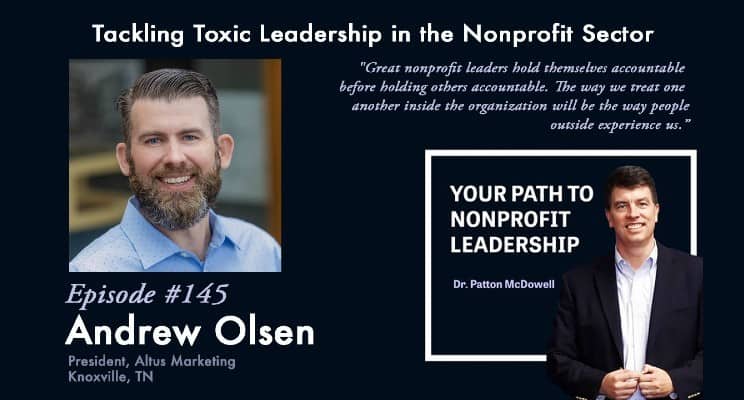
High performers often leave organizations because of toxic environments. Today’s mass exodus of employees from the nonprofit sector is connected in timing to the COVID-19 pandemic, but it’s about something much larger than whether or not people are vaccinated or asked to wear masks and social distance when they return to an office.
The pandemic gave people an opportunity to think deeply about what they want their work environment to look and feel like, and what they’re willing to accept going forward. Overwhelmingly, employees are pushing back on toxic behaviors and organizations.
As leaders, our responsibility is to cultivate healthy cultures where every employee can experience physical and psychological safety. But that can’t happen if we behave in toxic ways, or if we allow others to behave that way.
One of the most frequent ways this happens is that leaders refuse to deal directly and swiftly with the bad behaviors of high performing employees. Those behaviors are discounted because the person in question “delivers results”. But the problem with this is that it sets the tone for acceptable behavior across your organization, and communicates to everyone in the organization that you value results over people. Simply put, if you say you value people and culture, but you allow this kind of behavior to fester in your organization, you’re not leading with integrity. And that’s a recipe for organizational disaster.
Other ways that we foster toxic work environments, even if we aren’t trying to, include:
- Creating a constant pressure-cooker environment of high stress with few or no opportunities for people to decompress
- Focusing on people’s weaknesses instead of amplifying their strengths
- Allowing and/or participating in gossip about employees instead of encouraging employees to deal directly and candidly with one another when conflict arises
- Not appreciating people for the contributions they make
- Taking all the credit for the team’s success, and pushing the blame for failure to subordinates
- Responding negatively to failures instead of using them as learning and coaching moments
- Squashing dissenting perspectives
- Mandating inflexible work environments
- Creating impossible goals that your employees don’t have control over
- Dismissing people’s feelings and perspectives with comments like, “You need to get over it” or “You just need to be more thick-skinned”
As you look at this list, maybe you don’t think these are toxic behaviors. If you’re like me, maybe you look at it and say, yikes. This looks like a lot of the ways I was treated early in my career. Just because we were treated this way in the past doesn’t make them right. And if you want to be a more successful leader, you want to build a healthy, more inclusive culture, you need to guard aggressively against toxicity in your ranks. Because if you don’t, it will spread like a cancer across your organization and destroy any potential for a healthy dynamic.
We talk about this and so much more in the podcast episode. I hope you’ll take a minute to check it out.
I also talk about this and many other critical leadership mistakes in my book (you can download the PDF version for FREE), 101 Biggest Mistakes Nonprofits Make and How You Can Avoid Them.